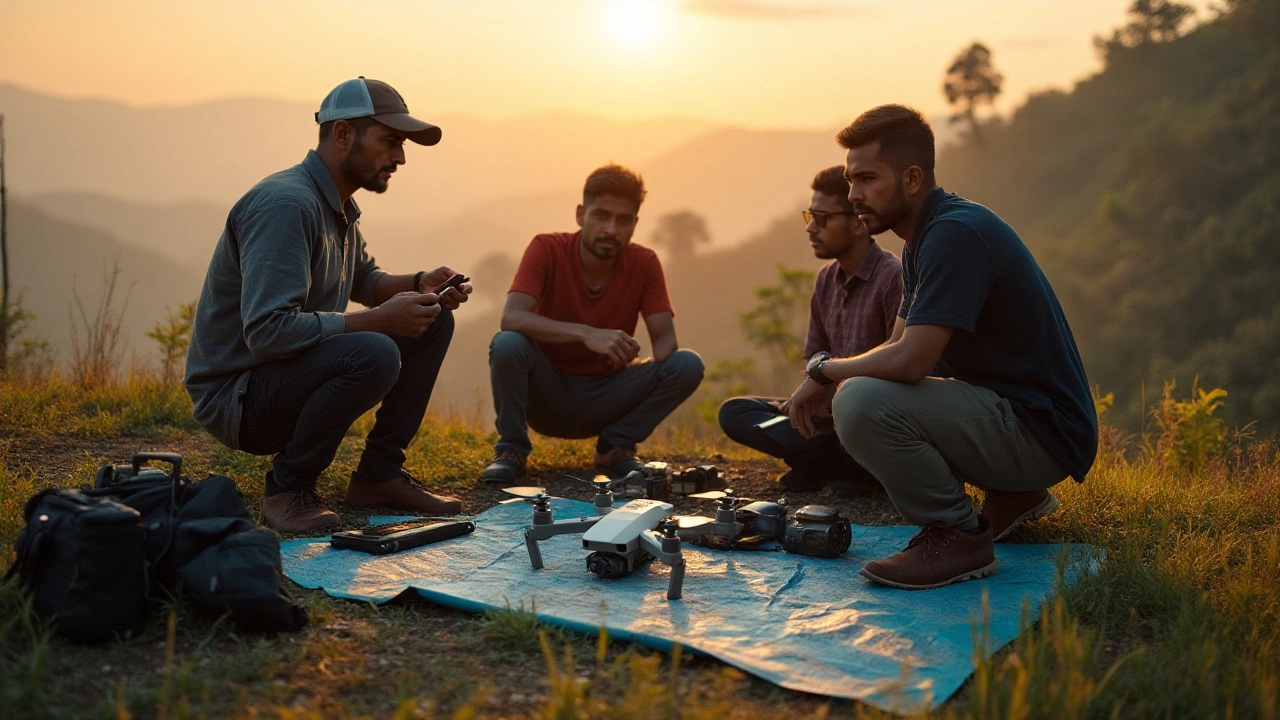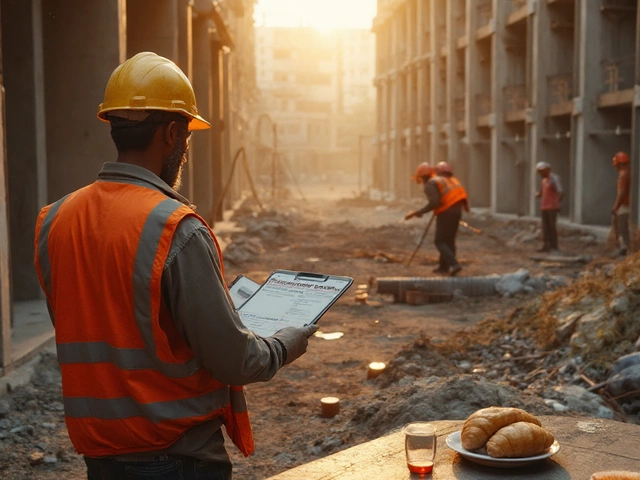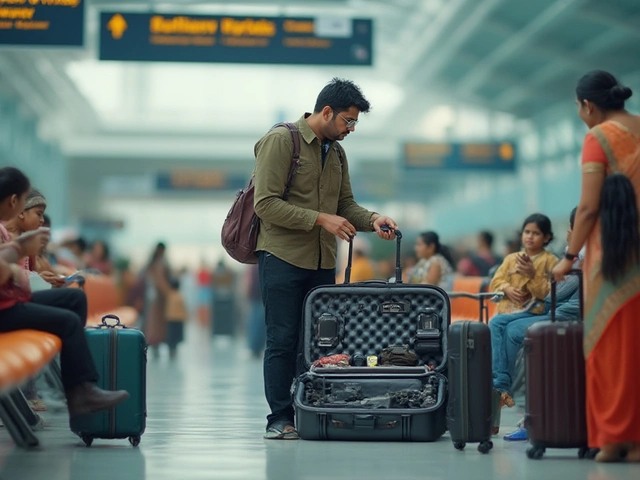Drone enthusiasts and photographers are increasingly curious about how their flights are monitored, especially when it comes to organizations like the FAA. Operating drones involves understanding not just local legislation but also insights into international regulatory practices. Many people wonder whether the FAA, known for its extensive regulation in American airspace, has the ability to detect drone flights beyond the United States.
While the FAA's jurisdiction is primarily within the United States, learning about their methodologies opens up a broader dialogue on drone security and privacy globally. This is particularly important for Indian drone operators who are capturing the breathtaking landscapes that the country offers. However, staying informed about both international and domestic guidelines ensures that drone usage remains both creative and compliant.
Join us as we explore the fascinating world of drone detection, unraveling the FAA's capabilities, and how these insights can serve drone photographers in India. We'll also highlight legal frameworks and provide tips for flying your drone safely and responsibly.
- The Role of the FAA in Drone Regulation
- Methods of Drone Detection
- Drone Photography in India
- Legal Guidelines for Drones in India
- Tips for Safe and Legal Drone Use
The Role of the FAA in Drone Regulation
The Federal Aviation Administration, or FAA, plays a pivotal role in governing the skies above the United States. Tasked with maintaining a balance between safety, innovation, and privacy, the FAA's regulations are tools for ensuring that drone flight enhances rather than hinders our modern airspace. Established decades before drones became mainstream, the FAA has adapted to include unmanned aircraft systems within its purview. One of the FAA's core functions is to create frameworks that ensure these new-age fliers coexist safely with traditional aircraft.
Drones—once considered mere toys—are now integrated into serious business operations, academic research, environmental monitoring, and artistic ventures like drone photography. The FAA's regulatory guidelines for drones include the Part 107 rule, a comprehensive protocol that encompasses remote pilot certification, operational limitations, and requirements related to keeping unmanned aircraft within the visual line of sight. A particularly insightful aspect about the FAA is their risk-based approach to regulation, which seeks not to stifle innovation but rather to gently weave emerging technology into existing systems.
"The mission of the FAA is to provide the safest, most efficient aerospace system in the world," says Administrator Steve Dickson, highlighting the organization's key focus areas in drone regulation.
Interestingly, while the FAA's jurisdictional range doesn't extend to India, the principles, and practices they employ reverberate globally. In many ways, the FAA sets the standard, influencing regulatory practices worldwide, including countries embarking on their drone aviation journey. India's Directorate General of Civil Aviation often collaborates with international bodies, indirectly incorporating FAA standards into their guidelines. By understanding the FAA’s role in drone regulation, operators in all parts of the world, including India, gain a clearer perspective on safe practices and legal flying routines.
From mandatory registration and remote ID requirements to drone detection systems designed to improve national airspace safety, the FAA's technical adaptations are impressive. Beyond structuring regulations, the FAA leverages technology to detect airborne drones. These systems are critical as they address issues such as privacy, enforcement, and security. Though primarily implemented for American airspace, these systems serve as a benchmark for automating and expanding detection capabilities elsewhere, including India. This global footprint serves as a guidepost for nations designing their regulations, ensuring worldwide drone operation remains seamless and secure.
Methods of Drone Detection
The realm of **drone detection** presents a fascinating intersection of technology, privacy, and security, intriguing both enthusiasts and regulators alike. At the forefront, many might wonder how exactly their aerial devices are being tracked and monitored. The complexity lies in the sophistication of the detection methods. Drones are typically detected using a combination of radio frequency (RF) detection, radar systems, acoustic sensors, and optical solutions such as cameras. Each method plays an integral role in painting a comprehensive picture of drone activity in a given airspace.
Radio frequency detection focuses on monitoring the communication signals between a drone and its operator. By scanning specific frequency bands, RF detectors can identify and locate drones by their control signals. This method is advantageous because it can operate under various weather conditions and is less susceptible to false alarms. Notably, however, drones that are pre-programmed to fly without controller input can potentially evade detection through RF means.
Radar systems, those stalwarts of air traffic control, have been adapted to track drones. These systems send out electromagnetic signals and receive them once they bounce back from objects in their path. When directed towards the skies where drones soar, radar can detect even these small flying objects. Specialized radar for drones often includes software algorithms designed to differentiate between birds and drones, which is crucial in avoiding false positives. As drones continue to shrink in size, radar technology must evolve to maintain detection accuracy.
Acoustic sensors provide another layer of **drone detection** by using arrays of microphones to capture the unique audio signatures emitted by drone propellers. One compelling advantage of acoustic detection is its passive nature, meaning it doesn’t transmit any signals, making it hard for drone operators to detect its presence. However, acoustic detection is more effective in quieter environments, as it can be overwhelmed by loud ambient noise.
A spokesperson of a leading drone detection technology company once shared, "Tracking drones is a mosaic of technology. Each method has its strengths and limitations, but combined, they create a robust detection system." This highlights the importance of integrated systems that capitalize on the strengths of each method to provide security agencies with comprehensive surveillance capabilities.
Finally, optical solutions such as cameras can also be utilized in the detection process. These solutions, sometimes enhanced by artificial intelligence, identify drones based on their shape and movement patterns in various environmental conditions. While the range is a limitation, they are extremely useful, particularly for identifying and tracking drones visually when they enter restricted airspace where security is a heightened concern.
When discussing **drone detection**, it's crucial to consider not only detection efficiency but also respecting privacy and legal frameworks, especially in regions like India where drone laws are still evolving. Drone operators should remain abreast of how detection systems could impact their operations and respect the delicate balance between innovation and security.
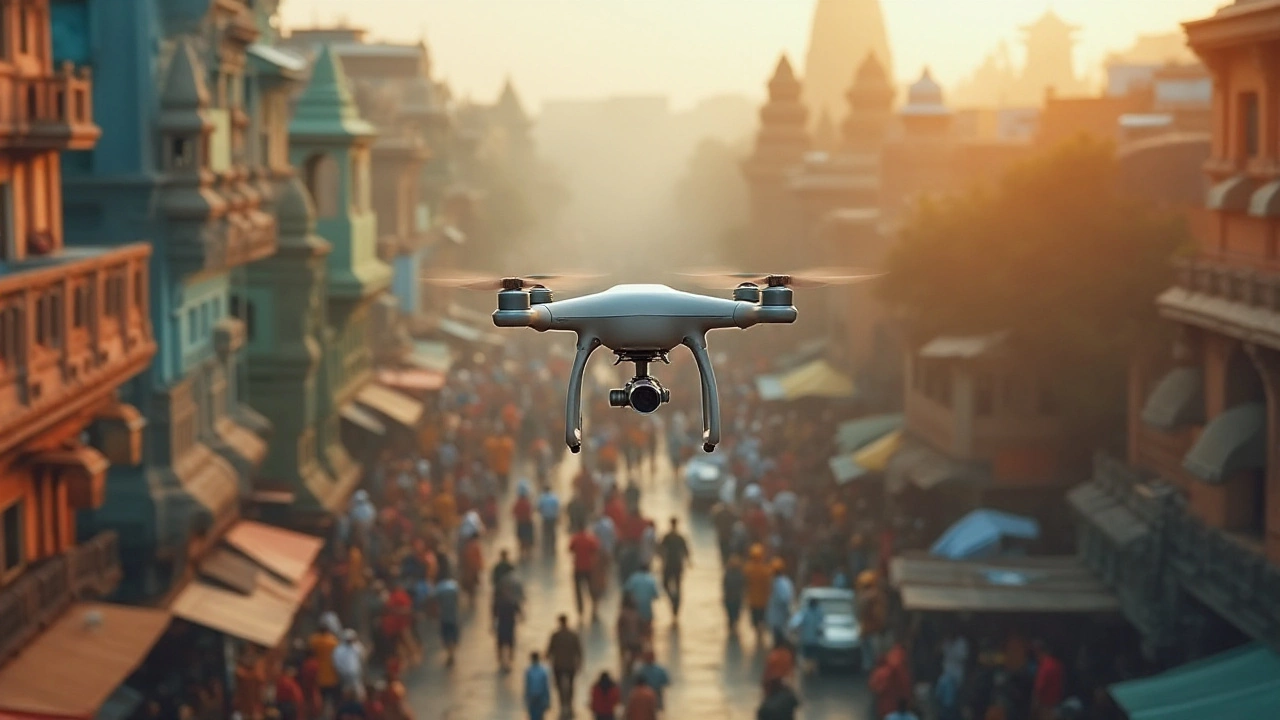
Drone Photography in India
India's vibrant landscapes present an enviable canvas for drone enthusiasts and photographers. From the snow-capped Himalayas in the north to the serene backwaters of Kerala in the south, the possibilities for capturing breathtaking aerial shots are boundless. With the advancement of drone technology, photographers have ventured into new realms, enabling them to redefine visual storytelling against the backdrop of India's varied topography. This surge in drone use has seen enthusiasts capturing everything from bustling cityscapes to the tranquil expanses of rural India.
Government regulations are evolving to keep pace with this rapid growth. In December 2018, the Directorate General of Civil Aviation (DGCA) implemented the Civil Aviation Requirements (CAR) rules to manage the safe and legal use of drones. These guidelines require drone operators to obtain an Unmanned Aircraft Operator Permit (UAOP) for certain categories of drones. For photographers, adhering to these regulations is essential to ensure that their creative pursuits do not land them in legal troubles.
Many Indian photographers are channeling their creativity into unique projects that demonstrate the potential of drone technology. A recent survey by 'Drone Federation of India' showed that over 60% of drone photographers in the country utilize these devices professionally, covering weddings, real estate, and wildlife, among other assignments. Emerging technologies are further enhancing these capabilities, allowing the creation of high-resolution images and video content that captivate audiences worldwide.
Challenges remain, particularly regarding permissions and airspace restrictions that photographers must navigate. Popular tourist spots like the Taj Mahal and certain wildlife parks require special authorization for aerial photography. Enthusiasts should be prepared to engage with officials and seek the necessary approvals. This interaction is crucial in fostering a responsible community that respects privacy and safety measures, paving the way for a sustainable drone photography industry in India.
Motivated by the interplay between technology and artistry, drone photographers continuously push the envelope. They explore new techniques and settings across India's diverse environment. While the potential for creating stunning visuals is immense, an ethic of compliance and safety ensures that creativity can flourish without adverse consequences.
"Drones offer an unprecedented view of India’s beauty, but with that privilege comes the responsibility to operate them wisely," remarked a renowned Indian filmmaker at a recent drone technology conference.
Legal Guidelines for Drones in India
Drones have become a ubiquitous sight in the skies, used for everything from capturing stunning aerial photography to assisting in critical infrastructure inspections. In India, the Directorate General of Civil Aviation (DGCA) oversees the regulation of drone operations to ensure safety, security, and privacy. Understanding the legal framework is crucial for anyone wishing to engage in drone photography within India.
The Indian government categorizes drones based on their weight, from Nano (less than or equal to 250 grams) to Large (over 150 kilograms). Individuals or organizations planning to use drones must register their devices on the Digital Sky Platform, a government portal designed to facilitate the licensing and monitoring of drones. The regulations mandate a unique identification number for each drone, emphasizing accountability and traceability.
As of the latest guidelines, all operators of drones, except for those classified as Nano, need to acquire an Unmanned Aircraft Operator Permit (UAOP). Conducting operations without the proper permit can lead to severe penalties. Flying a drone requires compliance with the 'No Permission-No Takeoff' (NPNT) principle, meaning operators must obtain permission through a mobile app before each flight. This ensures that drone flights are adequately monitored and recorded, aiding in the regulation of drone detection and airspace management.
Specific Operational Limitations
Operators must adhere to altitude restrictions and maintain their drones within the line of sight at all times. Also, flights near airports, international borders, and other sensitive areas are strictly prohibited unless approved by governmental authorities. The regulations also impose time limitations, prohibiting flights after sunset and before sunrise, often referred to as night-flying restrictions.The local communities must be considered when flying drones, as privacy remains a significant concern. The law is stringent on capturing images in sensitive locations, and operators should double-check the legality of shooting in any area deemed private or restricted by the authorities.
According to a recent report by the DGCA, "Drone operations have increased exponentially in India, which necessitates a comprehensive regulatory framework aimed at safeguarding public interests while fostering technological advances."
Promoting Responsible Drone Use
It isn't just about adhering to rules; operators are encouraged to follow best practices to enhance safety and responsibility. This includes regular maintenance and testing of equipment and staying abreast of any updates or changes in legislation. Pertinent to enthusiasts in drone photography, capturing images or videos of individuals without consent is frowned upon and potentially punishable under India's privacy laws.In conclusion, while the prospects of exploring India's vast panoramas with a drone are enticing, operating them demands a thorough understanding of the legal responsibilities involved. Staying informed and respecting the statutes not only protects you from legal repercussions but also fosters a positive environment for all drone enthusiasts in the nation.
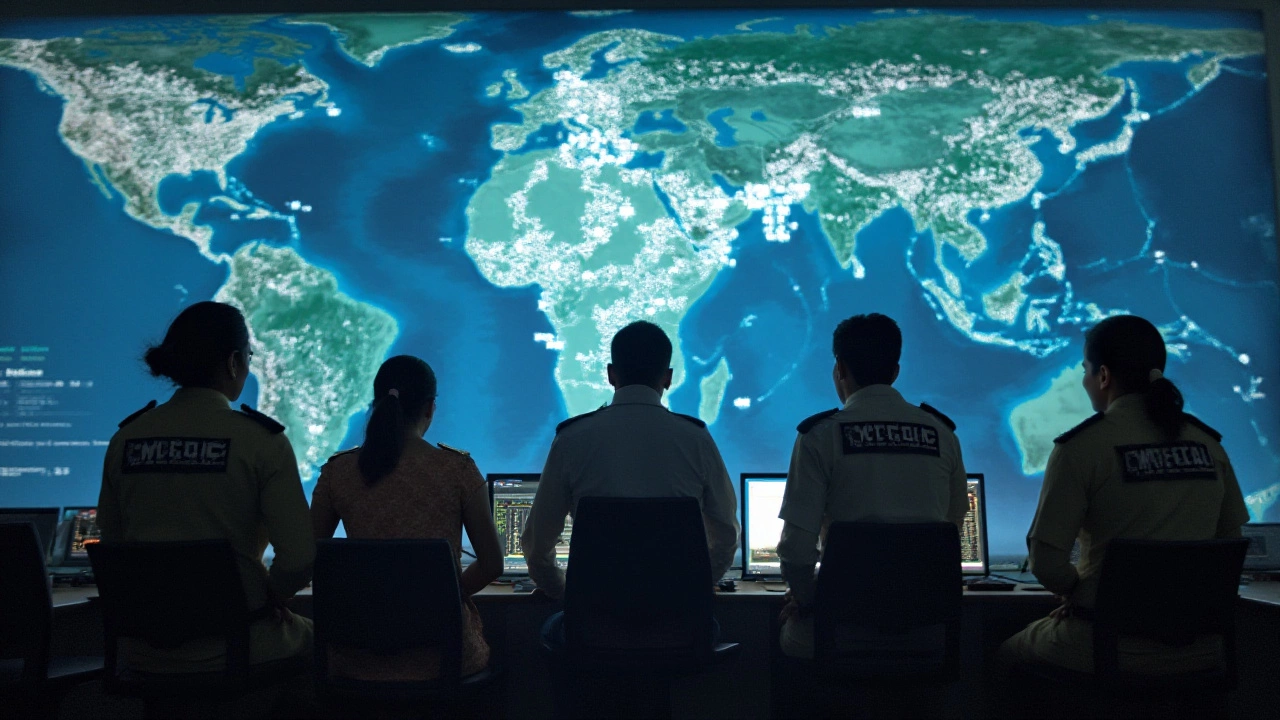
Tips for Safe and Legal Drone Use
As the popularity of drones surges, knowing how to operate them safely and legally becomes paramount. Drone usage is an enriching way to explore aerial photography and videography, but without adhering to drone detection and safety regulations, what starts as a hobby can quickly turn into an issue. The Directorate General of Civil Aviation (DGCA) in India regulates drones, ensuring that operators are equipped with the necessary knowledge and tools. It's critical to start by registering your drone and securing the right permissions for your intended flights. Only drones weighing more than 250 grams require registration, but knowing this distinction helps keep you on the right side of the law. Once registered, operators must ensure they adhere to the no-fly zones established around airports, military bases, and strategic locations.
One of the key considerations is understanding airspace classifications. Indian airspace is divided into red, yellow, and green zones. These classifications dictate where you can and can't fly without prior permission. Flying within drone photography permissions is largely allowed in green zones. Yet, even in these areas, maintaining line of sight is important. Keeping your drone within visible range not only complies with legal requirements but aids in avoiding unforeseen collisions or accidents. A common safety tip shared by many experts, including those from the DGCA, is to avoid flying during adverse weather conditions like heavy rain or strong winds. This ensures that the drone remains stable and responsive.
"Technology will only improve drone capabilities, making them more durable and stealthy, but pilots must never neglect the human factor of responsibility and mindfulness," observes a DGCA representative.Advanced drone operators advocate pre-planning flights using apps and maps that indicate restricted airspaces. While flying in yellow zones often requires a permit authorized by the DGCA, ignorance of these zones doesn't excuse infractions. Planning enhances safety and adds to the thrill of capturing unique perspectives legally. Using an app to check for geomagnetic activity or disturbances is another growing practice among drone pilots, as these factors can unexpectedly influence drone equipment performance.
Another tip many consider essential is investing in drone insurance. While it’s not mandatory, having insurance provides an extra layer of financial protection against potential damage or legal claims. There are different insurance plans available ranging from coverage for accidents to third-party liability issues. Not everyone realizes how useful this can be until faced with accident scenarios or incidents of property damage. Likewise, joining drone clubs or online communities can offer invaluable insights and support. Many passionate drone enthusiasts share their real-life experiences, suggestions, and sometimes even information about particular lands or locations around India that are excellent for flying.
It's also crucial to conduct regular maintenance checks on your drone to ensure all components are in optimal working condition. Inspect the propellers, as any wear and tear can result in flight instability. Regular software updates and battery checks are also integral steps to prevent sudden mid-air failures. Ensuring your drone’s firmware is updated can fix bugs and enhance the experience. Maintaining logs of your flights might seem like an additional task but provides useful information that can be referred to in case of any discrepancies or needs for legal proof. Whether you are merely starting out or looking to expand your horizons in drone photography, keeping abreast of technological advancements and legislative changes not only heightens safety but ensures joyous flying without complications.
